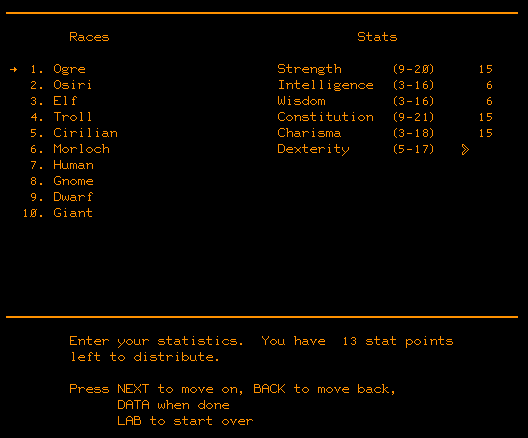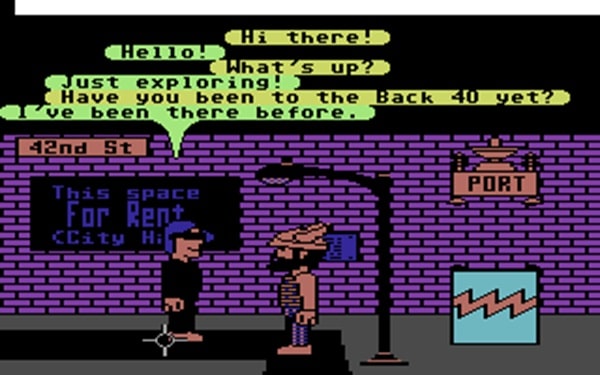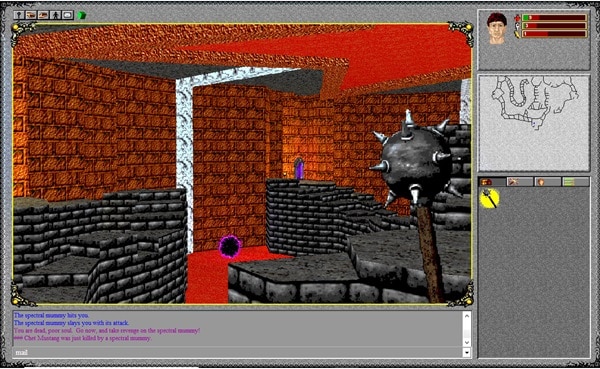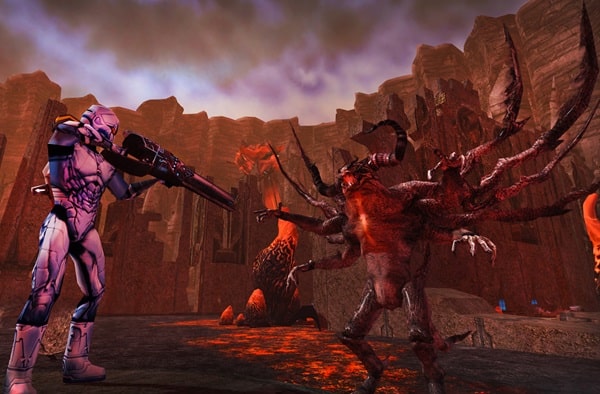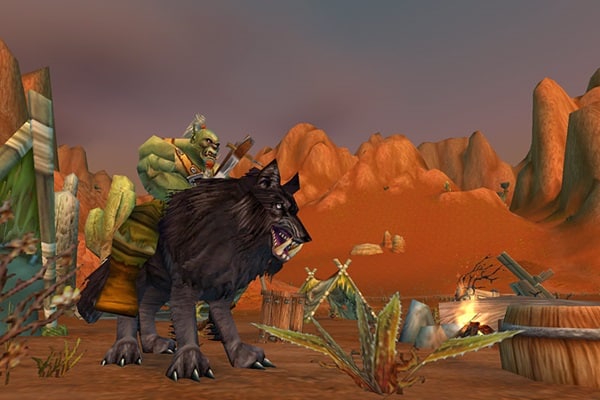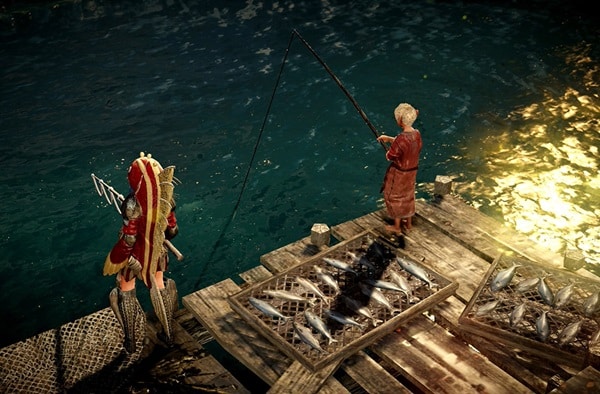The evolution of virtual worlds and MMORPGs (Massively Multiplayer Online Role-Playing Games) has been a transformative journey, tracing back to the mid-1970s when the first graphic virtual world, Mazewar, emerged. This early innovation set the stage for a new interactive and immersive online environment era. Over the decades, these digital landscapes have evolved from simple text-based interfaces to complex, graphically rich universes teeming with players from around the globe. Today, the MMO genre is not just about the games but the vibrant communities and the significant cultural phenomena they have created.
Early Influential Games

Adventure, created by Will Crowther in 1975, was the first widely played adventure game and introduced features that would become staples in role-playing games, including dungeons and a computer-controlled dungeon master. The game’s expansion by Don Woods in 1976 added more depth and complexity, increasing its appeal and influence. Adventure’s text-based gameplay and fantasy elements inspired a generation of developers, creating more sophisticated games like Zork, developed at MIT in 1977, which later became a standard-bearer for interactive fiction.
In the UK, Roy Trubshaw’s development of MUD (Multi-User Dungeon) in 1978 brought a new dimension to virtual worlds by allowing multiple users to interact within the same game environment. This game, written initially in MACRO-10 assembly language for the DEC PDP-10, was a technical achievement and a cultural phenomenon that introduced the concept of persistent online worlds. MUD’s transition to other systems and its adoption across various networks illustrated the growing appeal and feasibility of creating expansive, interconnected virtual spaces.
Graphical Multi-User Dimensions (MUDs) and Their Development
The PLATO system, an educational computer setup that predated many modern computing advancements, was instrumental in pushing the boundaries of what virtual worlds could be. With games like Oubliette and Avatar, which supported multiple players in complex game worlds, PLATO showcased the potential of graphical multiplayer environments. These games were among the first to use graphics instead of text, visually representing the dungeon-crawling adventures that players could undertake together.
Despite their innovative nature, the graphical games developed on PLATO were confined to the system’s educational and research context, limiting their wider cultural impact. However, they laid foundational concepts that would eventually permeate the broader gaming industry, influencing the development of more accessible virtual worlds. The importance of these developments cannot be overstated as they demonstrated that the technology for immersive, graphical multiplayer experiences was not only conceivable but practicable.
Commercialization of MMORPGs
The commercial potential of MMORPGs became apparent with the release of the Island of Kesmai on CompuServe in 1985. This game, arguably one of the first commercial MMORPGs, allowed players to explore and fight in a large-scale online world for a fee. Following its success, other games, such as Habitat by Lucasfilm Games, ventured into online spaces, offering rich graphical interfaces and the concept of a large-scale virtual community. These early commercial efforts were crucial in establishing the viability of MMORPGs as a profitable entertainment medium.
The development of commercial online platforms, such as Quantum Link for the Commodore 64 and, later, America Online, expanded the reach of MMORPGs, connecting thousands of users across diverse backgrounds. This period marked a significant shift from experimental to commercial development, with companies beginning to see the financial benefits of investing in the development and maintenance of online worlds.
The Rise of MMORPGs in the 1990s
The 1990s heralded a golden age for MMORPGs, with games like Neverwinter Nights and Meridian 59 shaping the future of online gaming. Neverwinter Nights, launched on AOL in 1991, became the first graphical MMORPG available to a wide audience, setting a precedent for the genre. Its success proved that there is a substantial market for immersive, persistent online worlds.
Meridian 59 introduced a 3D environment and real-time gameplay, significantly enhancing the player experience. This era saw the MMORPG genre solidify its appeal, drawing in more developers and players keen to explore the possibilities of these new virtual worlds. The foundation laid by these games would pave the way for more sophisticated and expansive MMORPGs in the following decades.
MMORPGs in the Early 2000s: Expansion and Diversification
The early 2000s saw MMORPGs diversify into various themes and settings, driven by advancements in internet technology and graphics. Anarchy Online, released in 2001, was one of the first sci-fi-themed MMORPGs and attempted to incorporate a massive online world filled with futuristic technology and complex character progression systems. However, its launch was marred by technical issues that hindered its initial success. In contrast, Dark Age of Camelot, which also debuted in 2001, offered a smoother launch and introduced the “Realm vs. Realm” PvP system, enhancing the competitive aspect of MMORPGs and setting a new standard for player interaction and warfare.
The cancellation of Ultima Online 2 in March 2001 underscored the volatility of the MMORPG market, highlighting the challenges developers faced in balancing innovation with player expectations and market dynamics. Despite these challenges, the era also saw successful expansions in the MMORPG genre, including RuneScape and Phantasy Star Online, which broadened the market by introducing MMORPGs to home consoles, albeit with limited features compared to their PC counterparts.
Global Expansion and Diverse Developments in MMORPGs
As MMORPGs continued to evolve, they began to attract a global audience, particularly in Asia, where games like Lineage achieved unprecedented success. Released in 1998, Lineage captivated millions of players in Korea and set the stage for the global dominance of Korean MMORPGs. This period also saw the introduction of World of Warcraft in 2004, which revolutionized the MMORPG industry by setting new benchmarks in gameplay, storytelling, and community engagement. World of Warcraft’s success proved that MMORPGs could attract tens of millions of players worldwide and sustain their engagement through continuous updates and expansions.
This era also witnessed the rise of free-to-play models, particularly in Asia, where games like MapleStory and Guild Wars introduced microtransactions as revenue models. This approach allowed players to access the game for free but encouraged them to purchase in-game items to enhance their experience. This model has since become a standard in the industry, influencing various games across different platforms.
Current Trends and Future Directions in MMORPGs
The MMORPG genre continues to evolve, with current trends emphasizing more immersive and interactive experiences. Advances in virtual and augmented reality are beginning to influence the development of MMORPGs, promising even more immersive experiences that blur the lines between the virtual and real worlds. Games like EVE Online and Elite Dangerous explore complex player-driven economies and expansive universes, offering a glimpse into the future of persistent virtual worlds.
Furthermore, the rise of mobile gaming has introduced MMORPGs to a broader audience, with games like Genshin Impact and Black Desert Mobile redefining what’s possible on mobile platforms. These games offer a near-desktop experience, attracting millions of players who may not have traditionally engaged with MMORPGs. As technology advances, the boundaries of what can be achieved in virtual worlds will undoubtedly expand, leading to innovations and possibly a renaissance as new technologies like cloud gaming and AI become more integrated into game development.
Final Thoughts
MMORPGs have significantly transformed from their modest beginnings in the 1970s to the sprawling, complex universes we see today. This evolution reflects broader technological advancements and changing player expectations, pushing developers to innovate continually. As we look to the future, it is clear that virtual worlds and MMORPGs will continue to be at the forefront of gaming, offering players ever more immersive and engaging experiences. The journey of these virtual realms is far from over, and the next chapters will likely be as exciting as those that preceded them.
